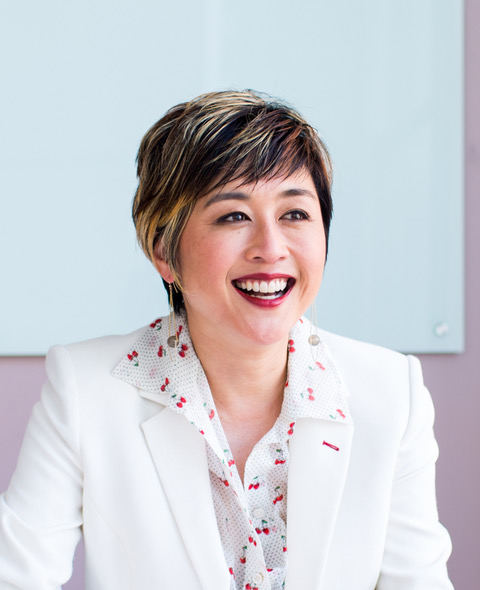Let’s talk about the birds and the bees (…the rated W version, as in Workplace)! When you think about how all animals (including us) have evolved and adapted over thousands of years, it’s a little crazy. In the same world that houses big data and self-driving cars, we still have a lot to learn…from nature.
Researchers found that while studying movement among honey bees, blue jack mackerel, and starlings, the algorithms were the same except for one variable: alignment. Bees had the least alignment, whereas starlings exhibited the most. Another example of how nature employs alignment is how dolphins swim in pods to work together towards a shared goal (feeding). Some dolphins swim to kick up fish from the bottom, others encircle the front of the school, but each one gets fed (shared success).
How does this apply to the way humans work? Well, it turns out humans want alignment too. The difference between us and dolphins is that we want to feel it in the way we work together and on a deeper level of what we value and believe.
The cost of misalignment
Generations ago, people didn’t give much thought to how they aligned with their employer’s values and decisions (think Mad Men). Now a 2022 Qualtrics survey shows that the majority (52%) of workers are willing to take a pay cut to work at a company that has values better aligned with their own. For Gen Z specifically, the percentage increases to two-thirds (68%).
The majority of workers are willing to take a pay cut to work at a company that has values better aligned with their own.
People are willing to put their money where their values are, so if the latter is not defined or clearly lived, how can you expect alignment between your employees and your company?
Recall a time when your workplace felt misaligned. Maybe during your status meetings, people are just one-upping each other instead of celebrating together as a team. Maybe you get a cutthroat vibe from your workplace rather than one that is collaborative and psychologically safe.
At the company level, misalignment exists in the news stories of companies revoking work-from-home promises and threatening people’s jobs over it. On the individual level, it exists in the way employees are quietly quitting their roles for more purposeful pursuits. Trends in the workplace like rage applying, quiet firing, or the Great Breakup are MIA (misalignment-in-action).
When alignment becomes a condition of how a company operates, the impact is felt on both the individual and organizational levels too.
Aligning on the ME (individual) level
We’ve all gone through major personal shifts over the last three years, and it’s been a wild ride. As we go into a new year (or new anything), there are lessons we can take with each step forward. Reflect, write these lessons down, ask how they align with your values and whether it nurtures your greenhouse, and most importantly, integrate them into your life (psst, here are mine for 2023). This way, we can sow the seeds that serve us most.
In recent years, we’ve all endured some kind of loss or significant change. We’ve had to make big decisions within ourselves and with each other, all with the pressure of a pandemic, civil and political unrest, a rollercoaster economy, you name it. What I’ve found most impactful is instead of acting like “I’m fine,” is to level-set, with real talk, on where I am now and how my work and everyday actions can align with ME now, and for the ME I see for tomorrow. It’s not rocket science, but it’s probably the hardest easiest thing anyone can do.
When alignment happens, it becomes easier to show up not just on Mondays, but every day. Tasks and projects become less ugh and more let’s do this! That feeling exists because there’s a defined alignment between my individual ME (in authenticity and purpose) with that of the WE (team/company/community) around me.
As an exec from Starbucks said to me,
“I don’t need to read [and stay updated on] the news, I know I’m working on climate change and social justice every day.”
Impact on the WE (organization) level
Like many companies during the Covid pandemic, Starbucks was wrestling with how to keep its profits, people, and mission aligned – or rather, which of those things were at risk of suffering in pursuit of the others. Starbucks’ mission statement is “to inspire and nurture the human spirit – one person, one cup, and one neighborhood at a time.”
Remembering the human part of the mission statement and using values and purpose as a guide, Starbucks could make day-to-day decisions to adapt in ways that other companies had not prepared for. At the onset of the pandemic, when stores shut down temporarily, partners (employees) were still being paid, and management prioritized health and safety over profits. Together, different levels of the organization were committed to enduring the Covid storm and upholding the values and purpose that each aligned with.
[Important to note: the work we did with Starbucks captured a moment in time when the pandemic hit. We know there have been voices raised on unfair treatment and unions since created. In the least, it’s a reminder that alignment isn’t a one-and-done checkmark of a box. Regular tune-ups and adjustments are just as needed along the way.]
An alignment exercise for you
Reflect on the most important value that got you through this past year. Was it freedom, authenticity, meaningful relationships, or having fun? Below, I’ll have a list of example values, but feel free to add your own or tweak them.
- Choose your value, then list ways you might be more intentional in living that value in the new year.
- Ask your team what their most important value was to them. Put all these values together and see how your team can be more intentional about living them to succeed and support one another in the new year.
- Keep your list of values around for every team meeting, ask how they are being lived, and how you can better integrate them into the way you work together.
More values examples: gratitude, curiosity, compassion, faith, humor, optimism, self-respect, peacefulness, accountability, creativity, self-care, equality, family, joy, rigor, service, sustainability
In the next post, we’ll explore another greenhouse condition: belonging. In the meantime, ping me on social media, as I’d love to hear if you’ve done this exercise for yourself or for your teams!


